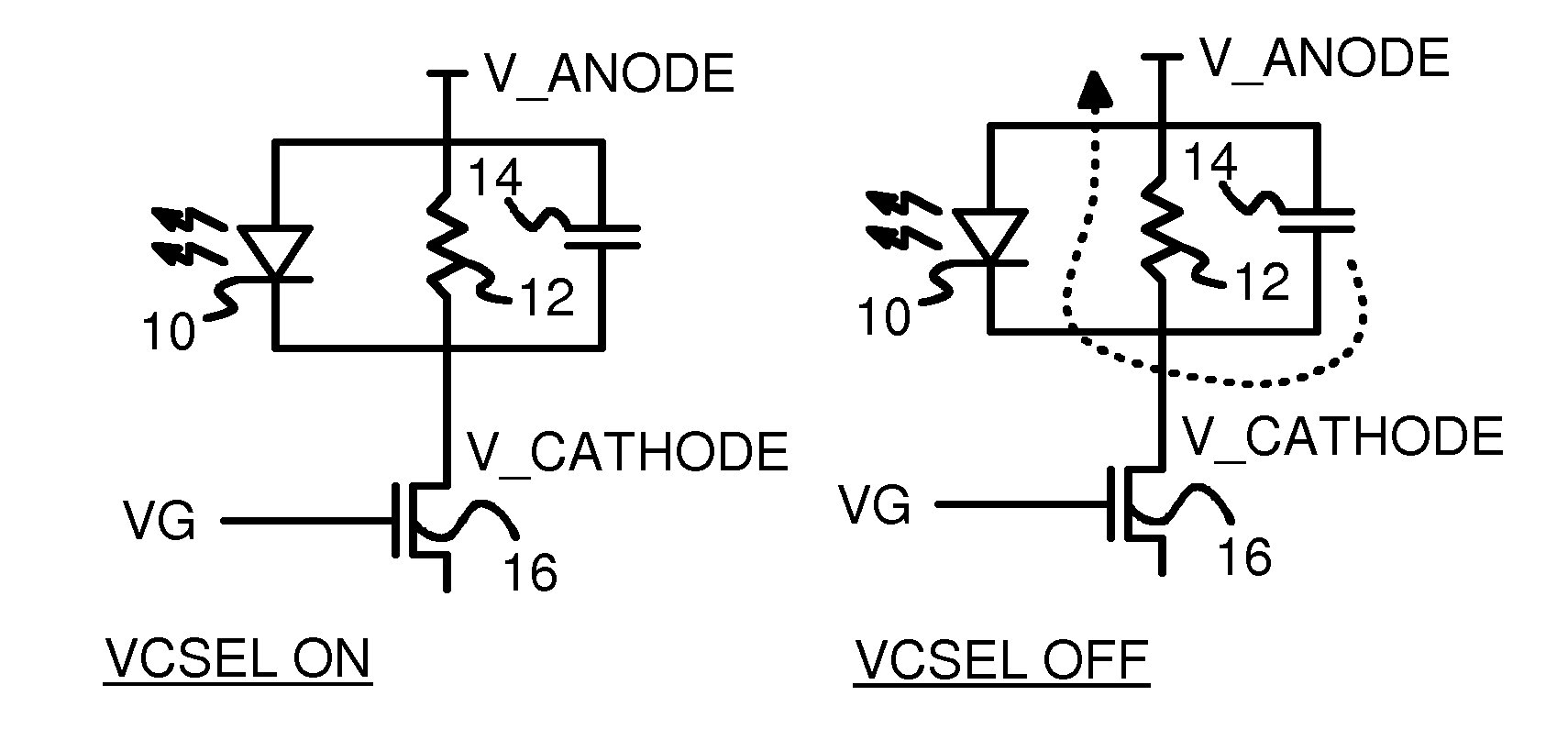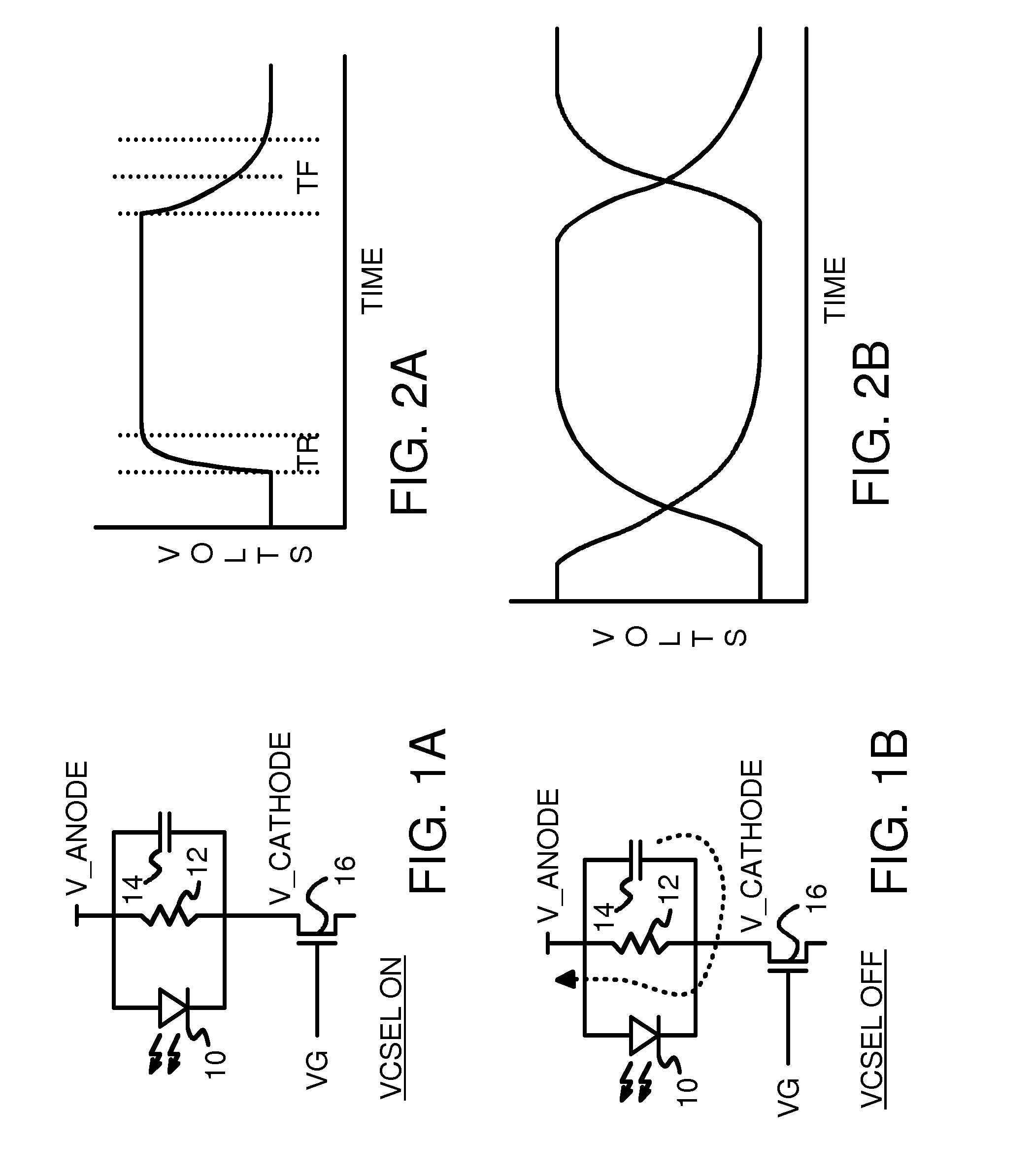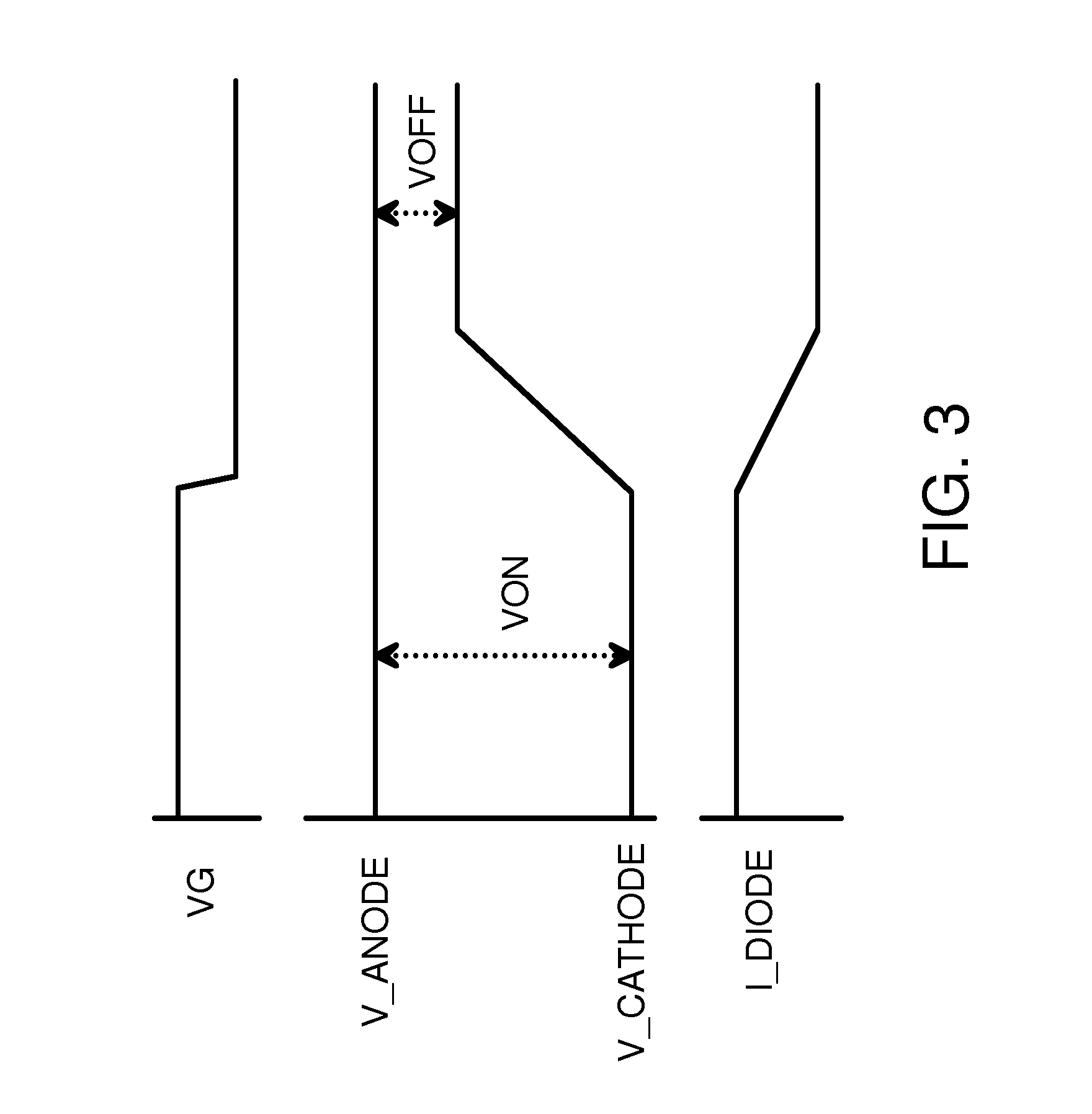Asymmetric edge compensation of both anode and cathode terminals of a vertical-cavity surface-emitting laser (VCSEL) diode
a technology of surface-emitting lasers and vcsel diodes, which is applied in the direction of laser details, semiconductor lasers, electrical apparatus, etc., can solve the problems of slow fall time, high production and packaging costs, and lower costs
- Summary
- Abstract
- Description
- Claims
- Application Information
AI Technical Summary
Benefits of technology
Problems solved by technology
Method used
Image
Examples
Embodiment Construction
[0028]The present invention relates to an improvement in VCSEL driver circuits. The following description is presented to enable one of ordinary skill in the art to make and use the invention as provided in the context of a particular application and its requirements. Various modifications to the preferred embodiment will be apparent to those with skill in the art, and the general principles defined herein may be applied to other embodiments. Therefore, the present invention is not intended to be limited to the particular embodiments shown and described, but is to be accorded the widest scope consistent with the principles and novel features herein disclosed.
[0029]The inventor has realized that the slow physical turn-off of a VCSEL device can be compensated for by sharpening the falling edge but not sharpening the rising edge of the output of the driver circuit. An asymmetric driver circuit provides a faster fall time while maintaining a fast rise time. When combined with a physical...
PUM
 Login to View More
Login to View More Abstract
Description
Claims
Application Information
 Login to View More
Login to View More - R&D
- Intellectual Property
- Life Sciences
- Materials
- Tech Scout
- Unparalleled Data Quality
- Higher Quality Content
- 60% Fewer Hallucinations
Browse by: Latest US Patents, China's latest patents, Technical Efficacy Thesaurus, Application Domain, Technology Topic, Popular Technical Reports.
© 2025 PatSnap. All rights reserved.Legal|Privacy policy|Modern Slavery Act Transparency Statement|Sitemap|About US| Contact US: help@patsnap.com



